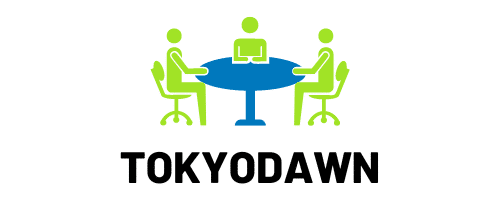Art, creativity, and design have always been a manifestation of human intelligence. A concrete testimony of our capacity to imagine, create, and transform our surroundings. But as we are in the heart of the 21st century, the traditional boundaries of these disciplines are being heavily influenced by another form of intelligence: Artificial Intelligence (AI). This influence is particularly impacting the field of graphic design. The way designers work, the tools they use, and how they create designs are undergoing a transformation. Let’s delve into understanding this impact of AI on the evolution of graphic design practices.
AI and the Tools of Graphic Design
The toolkit of a graphic designer has evolved greatly with the advent of AI. Gone are the days when a designer’s toolbox was limited to manual sketching. With the development of AI, graphic design tools have now become more sophisticated and intuitive.
A lire en complément : Can Technology Help in Achieving Universal Access to Clean Water?
These AI-powered tools are equipped with the capability to analyze data, understand user preferences, and create images & designs that resonate with the user’s taste. These tools are enabling designers to translate their creative ideas into reality with greater precision and efficiency. Tools like Adobe Sensei, Canva’s magic resize feature, and AI-powered logos creator platforms are revolutionizing the way designs are created.
For example, Adobe Sensei uses AI and machine learning to automate mundane tasks. This gives designers more time to focus on the creative aspects of designs. It can understand the context of the content and automate the process of tagging and organizing digital assets.
A voir aussi : How Is AI Being Used to Streamline Supply Chain in Manufacturing?
AI: Aiding Creativity or Hampering It?
A question that often arises when discussing AI’s role in graphic design is about creativity. Does AI aid creativity or hamper it? The answer to this question is complex.
AI does not create art or designs. It’s the human that programs the AI with specific algorithms and data which it uses to create designs or images. Therefore, the creative spark still lies with the human designer. What AI does is provide a unique set of tools and capabilities that can enable designers to execute their creative vision more efficiently.
But at the same time, it also poses a challenge to the designers. With AI handling certain tasks and processes in the design process, designers will need to constantly upskill and adapt to these changes. They will need to balance between leveraging AI’s capabilities and maintaining their unique creative edge.
The Marketing Edge: Personalization and Data-Driven Designs
One of the significant impacts of AI in graphic design is in the realm of marketing. AI’s ability to analyze vast amounts of user data and understand user behavior is enabling designers to create highly personalized and targeted designs.
AI can analyze the data to understand what kind of design elements resonate with a particular demographic, what kind of images they prefer, what color schemes attract them, and so on. These insights help in creating designs that are more likely to engage the target audience.
Such data-driven designs can significantly enhance marketing strategies. Brands can use these personalized designs in their online campaigns, social media posts, emails, and other digital marketing channels.
Shaping the Future: AI and User Experience Design
The symbiosis between AI and graphic design is not just shaping the present but also the future, especially in the field of user experience design.
AI can analyze how users interact with different elements of a design. It can understand what aspects of a design work well and which ones don’t. By analyzing this user behavior data, AI can provide suggestions to the designers on how to improve the design to enhance the user experience.
Moreover, AI can also simulate user behavior and predict how users might interact with a new design. This can be especially useful in the testing phase of a design. Designers can use this predictive analysis to fine-tune their designs before they are launched.
In this evolving landscape, graphic designers will need to adapt and learn to work in tandem with AI. This does not mean that AI will replace human designers. Instead, it will augment their capabilities. AI will handle the routine tasks, analyze data, provide insights, and even assist in the creative process. But it will always be the human designer who will direct this process and create designs that resonate with human emotions and experiences. AI is not here to compete with human creativity, but to complement it. After all, design at its core is a human endeavor. Design is about creating experiences, evoking emotions, and connecting with the audience on a human level. AI can assist in this process, but it cannot replace the human touch.
Ethical Considerations: AI and Graphic Design
As we delve deeper into the realm of AI in the graphic design industry, it’s imperative to consider the ethical aspects of this amalgamation. The rise of AI in graphic design does not come without its fair share of questions and concerns.
The incorporation of AI in the design process, while efficient, also raises questions about originality and authenticity in design. As AI tools become more advanced, they may start creating designs that are similar, potentially resulting in a lack of diversity in design elements and styles. This could lead to a saturation point where most designs start seeming repetitive and mundane, lacking the human touch and creativity.
AI’s capability to analyze user data for creating personalized designs also poses ethical concerns. Data privacy is a significant issue in the digital age. While using user data to create personalized designs can enhance the user experience, it’s crucial that this data is used responsibly, respecting user privacy and consent.
AI could potentially automate many aspects of a graphic designer’s job. This has led to apprehensions about job loss among designers. While AI can automate repetitive tasks, creativity is inherently human. Therefore, AI should be viewed as an aid to the designer, not as a replacement.
Despite these concerns, it’s undeniable that AI has the potential to revolutionize the graphic design industry. It’s essential to navigate these ethical considerations with care and responsibility to ensure the technology is used for the betterment of the design industry and not its detriment.
Conclusion: The Future of Graphic Design with AI
As we look toward the future of graphic design, it’s clear that AI is poised to play a significant role. From altering the tools used in the creative process to helping designers create more personalized, data-driven designs, the impact of AI on graphic design is profound.
However, the impact goes beyond just the technical aspects of design. The fusion of AI and graphic design is encouraging designers to rethink their role in the design process. This shift can potentially lead to more significant innovation and creativity in the industry.
The future of graphic design lies in the harmonious marriage of AI and human creativity. Designers will need to embrace AI, learn to work with it, and use it to their advantage. By doing so, they can enhance their creativity, execute their vision with greater precision, and create more impactful designs.
While AI is transforming the landscape of graphic design, it’s crucial to remember that the essence of design lies in human creativity and the ability to evoke emotions. AI can augment human creativity, but it cannot replicate it. The future of graphic design will be shaped by how effectively we can balance the capabilities of AI with the unique creative edge of human designers.











